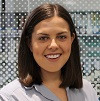In Australia, health conditions that are often affected by diet include being overweight or obese, coronary heart disease, stroke, high blood pressure, some forms of cancer and type 2 diabetes.
According to the Australian Institute of Health and Welfare’s 2020 report on Australia’s health, around two-thirds (67 per cent) of adults and one-quarter (25 per cent) of children and adolescents are overweight or obese. At the same time, coronary heart disease is the single leading cause of death in Australia.
The Australian Government’s Department of Health says almost half of all Australians have health conditions that can be prevented with a healthier and more active lifestyle.
Food has been used throughout history in both the prevention and treatment of certain chronic diseases. Professor Helen Truby from the School of Human Movement and Nutrition Sciences at the University of Queensland says the most widely used example of food as medicine comes from the mid-1700s, when sailors on long sea voyages contracted scurvy.
Truby, who is also the Chair of the National Committee for Nutrition at the Australian Academy of Science, explains that scurvy is developed through a lack of vitamin C and you can get it within 20-30 days of not having a dietary source of vitamin C.
‘James Lind was one of the surgeons on the British navy, he noticed that sailors who had a supply of citrus fruits, limes in particular, as part of their rations actually didn’t get scurvy. So he obviously didn’t know about vitamin C at the time, but that was probably the first trial that was actually noting using food as medicine. It helped to prevent a very debilitating condition on long sea voyages,’ she tells Wellbeing by Teacher.
Truby also cites the example of war times and the rationing of food. ‘The population were allocated certain amounts of food that were based on what their nutrient requirements were. So for instance, things like meat, eggs and fish and dairy products, fats and sugar were really rationed because they’re high value products and they were given enough to meet their nutrient requirements and keep the population healthy,’ she says. ‘And during that time, during rationing, even though people didn’t like it, diet-related diseases were very low.’
Truby says many of the seminal studies done during the war became the foundation of food as medicine and had a huge impact on people’s health.
‘Nowadays, unfortunately, we have a very abundant food supply and people can eat as much sugar as they like, and eat as much fat and fatty food products as they like. We see an abundance of diet-related diseases; particularly type 2 diabetes and cancers and cardiovascular disease and strokes. They’re still big killers of people in Australia,’ she adds.
The prevention and treatment of diseases
Truby says that when thinking about the prevention of lifestyle diseases like type 2 diabetes and heart disease, diet is only one element of risk.
‘We also know that our genetics and what we’ve inherited from our parents is also going to impact on our risk. But mostly, the main thing that really impacts on people’s long-term health now and their risk is their body weight,’ she says.
‘So if we have someone who is very overweight and gets type 2 diabetes for instance, if that person can lose weight, then their diabetes will go away.’
When talking about the treatment of certain diseases or conditions with food, Truby says it will depend a lot on the condition itself.
‘If people have specific conditions that they want to individualise and tailor their food choice to their particular condition, they’re probably better off taking advice from an accredited practicing dietitian,’ she says.
‘But in general, and again thinking about those more common conditions that we have in our community, there’s a lot of evidence around eating a more plant-based diet – a diet that’s high in fruits and vegetables, legumes, nuts and seeds – and less of other products like meat and fish and eggs, dairy products etcetera. And we know that long-term, those kinds of dietary patterns help people prevent lifestyle diseases like type 2 diabetes.’
Truby says it’s true that some diseases can be helped by diet and dietary change, but others can’t be. ‘If you look at cancer for instance, if you’ve got a brain cancer or a brain tumour, there’s nothing that diet can do for you. If you’ve got a tumour or gut-related bowel cancers or something, then diet can help in prevention and it can also help the recurrence of those kinds of things once it’s been treated. So there is a role for diet in a lot of different diseases but it really does need to be tailored towards the individual.’
Advice for teachers
Truby says it’s important that teachers think about how they manage their food intake over the school day to ensure they’re getting enough energy to sustain them.
‘I’m a big fan of things like muesli for breakfast. One, it’s got soluble fibre in it that helps feed your gut bacteria, which is good. And two, it’s got a low glycemic index so the blood sugars don’t take those big hikes and come down rapidly. So having a bowl of muesli with breakfast can actually stop you feeling hungry.’
Another tip Truby offers for people managing their weight is to always choose the smallest serve size you possibly can.
‘So even like your morning coffee, by all means have a coffee, but have a small coffee as opposed to an extra large one because the extra calories in there you’re going to struggle to burn off during the day,’ she says.
In general, people’s weight goes up very slowly but over time. ‘You might put on a kilo or a kilo-and-a-half a year, but over 10 years, that makes you 10 to 15 kilos overweight. So it’s managing those small changes over time,’ she says.
References
Australian Institute of Health and Welfare. (2020, July 23). Australia's health 2020. https://www.aihw.gov.au/reports-data/australias-health
How do you care for your own health and wellbeing? Do you have any recipes that you’d like to share with your colleagues in education? We’d love to hear about them. Email us with a brief outline and we’ll be in touch.


